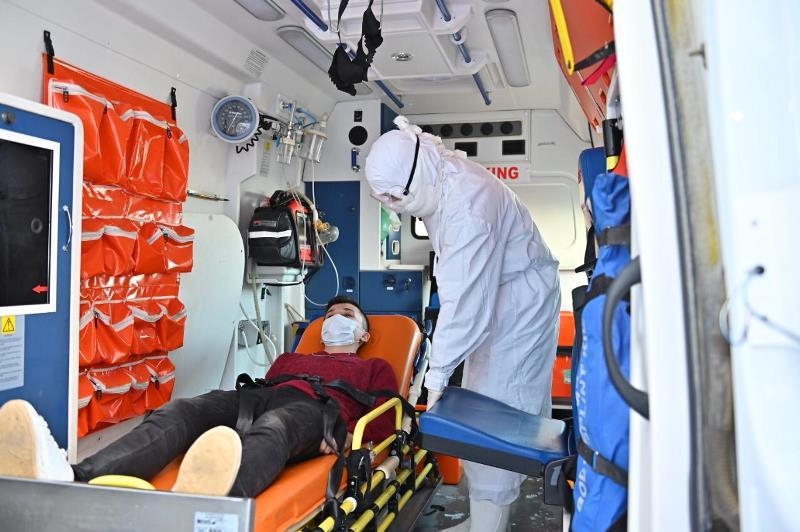NUR-SULTAN – The workload on the emergency medical services (EMS) significantly increased during the pandemic in all parts of the world. Approximately 1,400 Kazakh ambulance teams circulate daily to serve around 18,000 calls in Kazakhstan.

Photo credit: elorda.info.
The Kazakh government introduced lockdown measures in mid-March and managed to keep the COVID-19 spread low and boasts among the lowest mortality numbers of all infected countries. However, the low rate blinded many people to the dangers of the virus, which came along later with the weakening of quarantine measures. Many neglected social distancing rules, which resulted in a 10 percent increase in calls to EMS in June.
The ambulance service in Nur-Sultan had seen a four time increase in emergency calls. In June, the number of calls increased from approximately 1,000-1,500 to 4,500 calls in a week, Murat Orazbayev, the director of the Nur-Sultan medical care station, explained during a recent press briefing.
According to Orazbayev, the EMS in Nur-Sultan had the situation under control as it’s ambulance experienced only a 5 percent instance of delayed arrivals. In the period from June 15-22, in particular, the number of calls reached over 22,000. This increased the average wait time from 12 to 13 minutes, he added.
“The EMS during COVID-19 works within verified algorithms, which were developed based on the best international experience,” said Bakhtiyar Dzhusipov, a board chairperson of the National Coordination Center for Emergency Medicine.
The increase is mainly due to patients who have signs of acute respiratory illness. However, there are also a significant number of calls with requests for a consultation, said experts.
The National Coordination Center for Emergency Medicine began to deploy special call centers. The load on the capital’s EMS dispatchers and call centres eased with the addition of five remote keys with dispatchers, and seven in the contact center, Orazbaev said.
In assistance to dispatchers and call centers, the people in Nur-Sultan can call the EMS with a telegram bot. The patients also will soon be able to contact doctors with telemedical instruments on iDoctor.kz.
The Kazakh Ministry of Healthcare plans to continue increasing the number of ambulance cars, dispatchers, and medical workers to ease the workload on the EMS and eliminate delays. As of today, the EMS has 1,967 units of ambulance vehicles, 66.6 percent of which operate in urban areas. The government will purchase 807 more units from domestic producers this year.
“Currently, phased production of ambulance cars are in progress. In general, by the end of November this year, we plan to put into operation an entire new fleet of ambulance vehicles,” said Dzhusipov.

